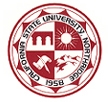Before you start:
- Do not begin this assignment the night before it is due.
- You may want to do this exercises on campus if you do not have a fast internet connection at home.
- Please stop by my office if you need help with this assignment.
- You may want to print out the instructions and work from the hard copy. This may save you some effort (but not ink)
- You may want to print or screen capture the results page out (once you’ve clicked submit at the end of this exercise) as proof that you completed the exercise.
- Remember to press TAB (or use your mouse) to move your cursor between response (answer) boxes.
- DO remember to put your name in the appropriate response box below.
Student Learning Outcomes:
Below are the learning outcomes for this assignment.
- Students will correctly identify or define several vocabulary terms associated geospatial technologies.
- Students will identify some of the known uses of geospatial technologies.
- Students will use an online mapping software to construct a map and convert address data to latitude and longitude coordinate data.
- Students will contribute data via spreadsheet to a 'cloud computing' application, to create a wiki-style map with fellow students.



